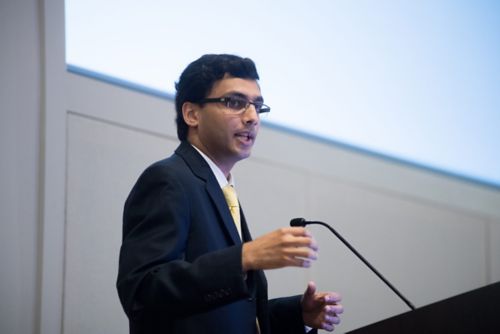St. Jude Family of Websites
Explore our cutting edge research, world-class patient care, career opportunities and more.
St. Jude Children's Research Hospital Home

- Fundraising
St. Jude Family of Websites
Explore our cutting edge research, world-class patient care, career opportunities and more.
St. Jude Children's Research Hospital Home

- Fundraising
COVID-19 prevention is essential for bone marrow transplant patients

Clinical research concerning COVID and bone marrow transplant patients shows that even one year after transplant, COVID infections result in an increased risk of severe disease or death.
Bone marrow transplant recipients, particularly men age 50 and older, are among those at the highest risk of severe disease or death from COVID-19. The largest study of transplant recipients yet found that even beyond one-year post-transplant, patients who contract SARS-CoV-2 were at significantly increased risk.
Consider this. Overall COVID-19 survival in the U.S. is 95-99%, according to published reports. The risk of severe COVID-19 complications and death is about twice as high in cancer patients. In this study, the estimated 30-day survival rate for transplant recipients after developing COVID-19 was about 70%.
“As the pandemic rages around us, these findings reinforce the urgent need to protect transplant survivors from SARS-CoV-2 infection,” said Akshay Sharma, MBBS, of the St. Jude Department of Bone Marrow Transplantation and Cellular Therapy. He and Neel Bhatt, MBBS, of Fred Hutchinson Cancer Research Center in Seattle led the analysis. The findings appeared recently in the journal Lancet Haematology.
The research focused on 318 transplant recipients from around the world who were diagnosed with COVID-19 by August 12, 2020. The data collected by the U.S.-based Center for International Blood and Marrow Transplant Research included children and adults in five countries, primarily in the U.S.
Defining the COVID risk for transplant patients
Bone marrow transplantation, also known as hematopoietic stem cell transplantation, is used to treat patients with cancer or other blood and immune system disorders. The process involves replacing the patients’ own blood-producing stem cells with ones from a genetically matched donor (allogeneic transplantation) or with the patients’ own previously collected cells (autologous transplantation).
Recovering from bone marrow transplantation takes time. The transplant itself, along with the underlying disease and its treatment, can lead to side effects that take a toll on organ function and health. The immune system usually needs six to 12 months to recover and continues to evolve over time.
Researchers identified other factors associated with increased risk of severe COVID-19 or death in transplant patients. They included being male, age 50 or older or developing COVID-19 within 12 months of transplantation.
The data also showed that even patients more than a year from transplantation were at greater risk of death following COVID-19. The risk was also elevated for transplant recipients who were not receiving immunosuppression. “While not completely unexpected, it was a little surprising that patients remained at high risk more than 12 months after transplantation,” Sharma said.
Protecting transplant patients from COVID-19
Diego Hijano, MD, of the St. Jude Infectious Diseases department said the study provided valuable information that can be used by the transplant registry and others to develop consensus guidelines for how to protect the most vulnerable transplant patients.
The study also highlights the importance of vaccination for family members and caregivers, as well as transplant recipients, Hijano said.
Study co-author Marcie Riches, MD, director of the Bone Marrow Transplant Program at the University of North Carolina at Chapel Hill, made the same recommendation. “It’s important for everyone to get vaccinated against COVID-19,” said Riches, who is also a scientific director of the Center for International Blood and Marrow Transplant, the source of the data. “It is unknown how well the vaccine works in patients who had BMT, but we encourage vaccination for patients more than three months from transplant.”
Meanwhile, transplant centers and patients must also take steps to reduce transmission risk, Sharma said. Those include strict isolation and stringent screening to prevent SARS-CoV-2 transmission among patients, some of whom may be asymptomatic. The asymptomatic COVID-19 screening program St. Jude implemented for employees, patients and families is one example for other institutions to follow.
“Patients should also do their utmost to avoid exposure to SARS-CoV-2,” Sharma said. That means following recommendations to stay 6 feet apart, mask up and practice good hand hygiene. “While prevention of infection is important for all, it is especially true for transplant recipients, given their higher risk of death if they develop COVID-19,” Sharma said.






